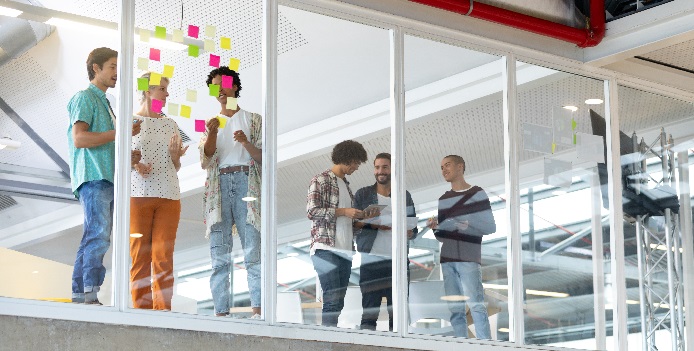The Daily Kanban Stand-up
originally written by Neel LakshminarayanOur summary and key takeaways
In Scrum, teams hold a daily scrum meeting ("daily scrum" or "scrum stand-up"). Once converted from Scrum to Kanban, teams tend to carry on conducting daily stand-up meetings with the following three - standard for Scrum - questions:
What did I do yesterday?
What will I do today?
Are there any impediments in my way?

Now, these questions are not really relevant when doing Kanban, since people just need to take a look at the board to see what I did recently and what I will do next. Instead of sticking to the old set, the author suggests new three questions for all recently converted Kanban and Scrumban teams:
What's impeding us?
Assuming, that the meetings take place in front of the board, there isn't even a need to discuss what items are impeded (since this will be visible on the board). Therefore, all there is to focus on is the possible and best solutions to the problematic items.
What's the flow like?
Because Kanban is all about the workflow, what should be discussed at this point are any possible changes that the team can make in order to make the flow even smoother and efficient. Also - should there be any bottlenecks, the daily stand-up is the right time to work on their best resolution.
What can we improve? How to achieve Kaizen?
The aim of this question is to empower the entire team to strive for constant improvement (Kaizen). By allowing for the change suggestions to come from anyone on the team, there are greater chances of making them a success.
... what else matters during a daily stand-up?
It makes sense, to check that the board is actually up to date, otherwise the meeting may go sideways. Also, it's very important to recognize success, even if only small, and appreciate the team's work, by looking at commenting on what's in the "done" column. It has proven successful in many teams, that the role of the meeting facilitator shouldn't be assigned to one person, as allowing everyone to try it encourages a wider perspective on the workflow. It also helps to finish the meeting on a positive, joyful note, to keep everyone's spirits up and ensure a good working atmosphere.